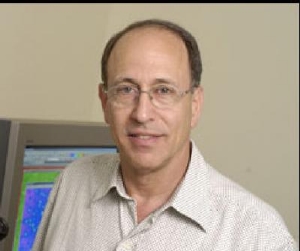Feb 17 2008
Technology invented by scientists from The Johns Hopkins University and Ben-Gurion University of the Negev can make three-dimensional imaging quicker, easier, less expensive and more accurate, the researchers said.
 Gary Brooker of Johns Hopkins University, co-inventor of new technology to make three-dimensional imaging quicker, easier, less expensive and more accurate.
Gary Brooker of Johns Hopkins University, co-inventor of new technology to make three-dimensional imaging quicker, easier, less expensive and more accurate.
This new technology, dubbed FINCH, for Fresnel incoherent correlation holography, could have implications in medical applications such as endoscopy, ophthalmology, CT scanning, X-ray imaging and ultrasounds, co-inventor Gary Brooker said. It may also be applicable to homeland security screening, 3-D photography and 3-D video, he said.
A report presenting the first demonstration of this technology -- with a 3-D microscope called a FINCHSCOPE -- will appear in the March issue of Nature Photonics and will be available on the Nature Photonics Web site on Feb. 17.
“Normally, 3-D imaging requires taking multiple images on multiple planes and then reconstructing the images,” said Brooker, director of the Johns Hopkins University Microscopy Center on the university’s Montgomery County Campus.
“This is a slow process that is restricted to microscope objectives that have less than optimal resolving power,” said Brooker, a research professor of chemistry in Krieger School of Arts and Sciences who also has an appointment in the Whiting School of Engineering Advanced Technology Laboratory. "For this reason, holography currently is not widely applied to the field of 3-D fluorescence microscopic imaging.”
The FINCH technology and the FINCHSCOPE uses microscope objectives with the highest resolving power, a spatial light modulator, a charge-coupled device camera and some simple filters to enable the acquisition of 3-D microscopic images without the need for scanning multiple planes.
The Nature Photonics article reports on a use of the FINCHSCOPE to take a 3-D still image, but moving 3-D images are coming, said Brooker and co-inventor Joseph Rosen, professor of electrical and computer engineering at Ben-Gurion University of the Negev in Israel.
“With traditional 3-D imaging, you cannot capture a moving object,” Brooker said. “With the FINCHSCOPE, you can photograph multiple planes at once, enabling you to capture a 3-D image of a moving object. Researchers now will be able to track biological events happening quickly in cells.”
"In addition, the FINCH technique shows great promise in rapidly recording 3-D information in any scene, independent of illumination,” Rosen said.